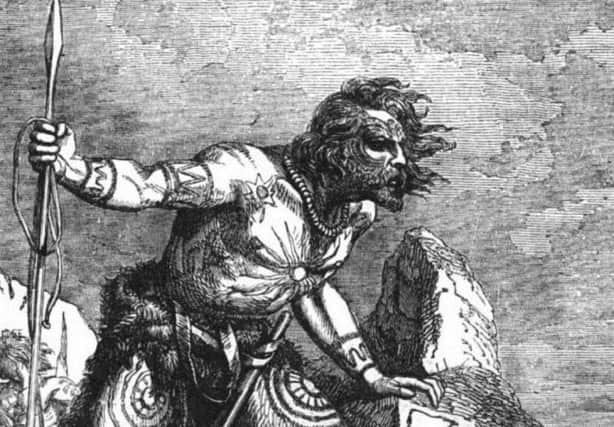Pictish fort relics preserved by Viking fire found in Moray


Researchers from the University of Aberdeen have unearthed a huge timber-laced wall that likely stood more than 6m high. They believe this would have disappeared if not preserved by the blaze.
They also found intricate hair and dress pins, one with a detailed bramble design, and identified midden layers that are expected to reveal new insights into the everyday lives of the fort dwellers.
Advertisement
Hide AdAdvertisement
Hide AdThe work is being led by Dr Gordon Noble, head of archaeology at the university.
The complexity of the fort defences was documented in the 19th-century work of archaeologist Hugh Young but Dr Noble said his team had expected little trace to remain.
Instead they found the defensive structure preserved in amazing detail.
“We are fortunate to have the descriptions of the site written by Hugh Young in 1893,” he said.
“He describes a latticework of oak timbers which would have acted as an enormous defensive barrier and must have been a hugely complex feat of engineering in the early medieval period.
“In the years that have passed since he made his observations, the Burghead fort has unfortunately been subject to significant coastal erosion and the harsh North Sea environment.
“But when we started digging, we discovered that while the destruction of the fort in the 10th century may not have been good news for the Picts, the fact that so much of it was set alight is a real bonus for archaeologists.
“We have discovered that the complex layer of oak planks set in the wall was burned in situ and that the resulting charring has actually preserved it in amazing detail when ordinarily it would have rotten away to nothing by now.”
Advertisement
Hide AdAdvertisement
Hide AdThe level of preservation has allowed the archaeologists to take multiple samples for carbon dating which should provide new insights into the period when the fort was built, its construction and final destruction.
Dr Noble added: “The Picts were a huge influence on northern Scotland but because they left no written records, archaeology is essential in providing answers in regard to their lives, influence and culture.
“While it has long been known that Burghead was a very significant place, it was also assumed that its archaeological value had been largely lost due to the destruction caused by the building of the modern town.
“Our work so far has shown that this is certainly not the case. Instead we are starting to build a picture of Pictish resources being out into this site on a scale we have never found evidence for before.”
But the team is under pressure to analyse the 1,000-year-old remnants as quickly as possible, before the site is lost to the sea.
The work at Burghead is supported by the Leverhulme Trust, the University of Aberdeen and Historic Environment Scotland.